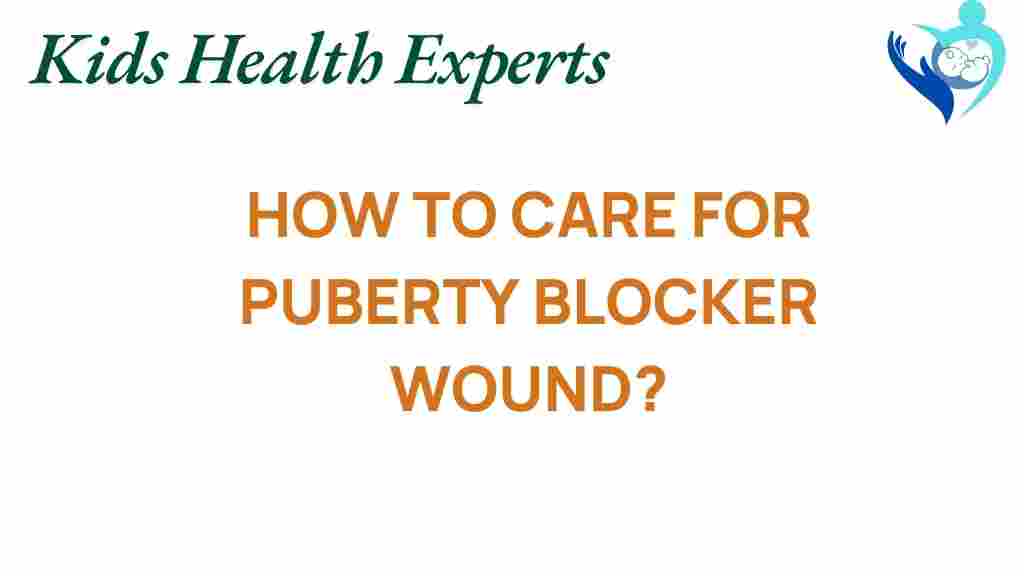Essential Tips for Caring for Puberty Blocker Injection Sites
Puberty blockers are medications used in hormone therapy to delay the onset of puberty in adolescents, particularly for those experiencing gender dysphoria. While using puberty blockers can be a crucial part of a young person’s transition, proper care for injection sites is essential to ensure comfort and prevent complications. In this article, we will explore essential tips for injection care, wound management, and self-care strategies to promote healing and well-being during hormone therapy.
Understanding Puberty Blockers
Puberty blockers, also known as GnRH agonists, work by temporarily halting the body’s natural hormone production. This pause allows adolescents to explore their gender identity without the added stress of developing secondary sexual characteristics. However, the administration of these injections requires close attention to injection care to minimize discomfort and the risk of infections.
Step-by-Step Injection Care
When receiving puberty blocker injections, following a systematic approach to care is vital. Below is a step-by-step guide to ensure optimal injection site care:
1. Prepare for the Injection
- Clean the Area: Use an antiseptic wipe to clean the injection site. This helps reduce the risk of infection.
- Gather Supplies: Ensure you have all necessary supplies, including gloves, alcohol pads, a sharps container, and sterile syringes.
2. Administer the Injection
- Technique: Follow the medical professional’s guidance on the correct method for administering the injection, whether intramuscular or subcutaneous.
- Distraction Techniques: For adolescents, using distraction techniques such as deep breathing or focusing on a favorite song can help ease anxiety during the injection.
3. Post-Injection Care
- Apply Pressure: After the injection, applying gentle pressure to the site with a cotton ball can help minimize bleeding.
- Bandage: Cover the injection site with a sterile bandage to protect it from germs.
Wound Management and Skincare
Proper wound management is crucial after administering puberty blocker injections. Here are some health tips to follow:
1. Monitor the Injection Site
- Check for Redness or Swelling: It’s normal for there to be some minor swelling or redness, but any significant change should be reported to a healthcare provider.
- Look for Signs of Infection: Symptoms such as increased pain, warmth, or pus may indicate an infection and require medical advice.
2. Keep the Area Clean
- Avoid Scratching: It’s important not to scratch or irritate the injection site, as this can lead to complications.
- Gentle Cleansing: Clean the area daily with mild soap and water, patting it dry afterward.
3. Moisturize and Protect
- Use a Non-Irritating Moisturizer: Keeping the skin moisturized can help prevent dryness and irritation.
- Protect from Sun Exposure: If the injection site is exposed to the sun, use a sunscreen with a high SPF to protect the skin.
Self-Care Strategies
Incorporating self-care into the routine can enhance recovery and overall well-being during hormone therapy. Consider these strategies:
- Healthy Diet: Eating a balanced diet rich in vitamins and minerals can support healing.
- Stay Hydrated: Drinking plenty of water is essential for maintaining skin health.
- Regular Exercise: Gentle exercise can improve circulation and help with emotional well-being.
Troubleshooting Common Issues
Despite best efforts, issues may arise at the injection site. Here are some common problems and solutions:
1. Pain at the Injection Site
- Reason: Pain can be a normal response to the injection.
- Solution: Apply a cold compress to the area for 15-20 minutes to reduce swelling and discomfort.
2. Bruising
- Reason: Bruising may occur due to blood vessels being disturbed during the injection.
- Solution: Similar to pain, applying ice can help lessen bruising.
3. Infection Signs
- Reason: Infection can occur if bacteria enter through the skin.
- Solution: If you notice increasing redness, swelling, or discharge, contact a healthcare provider immediately for further evaluation.
Conclusion
Caring for puberty blocker injection sites is an essential aspect of hormone therapy for adolescents. By following these essential tips for injection care, wound management, and self-care, individuals can promote healing and minimize the risk of complications. Remember that communication with healthcare providers is crucial; if any concerns arise, do not hesitate to seek medical advice. For more information on adolescent care and hormone therapy, visit Hormone Health Network for comprehensive resources.
Taking charge of your health and self-care not only improves recovery but also supports the overall well-being of those navigating this critical period of their lives.
This article is in the category Care and created by KidsHealthExperts Team
